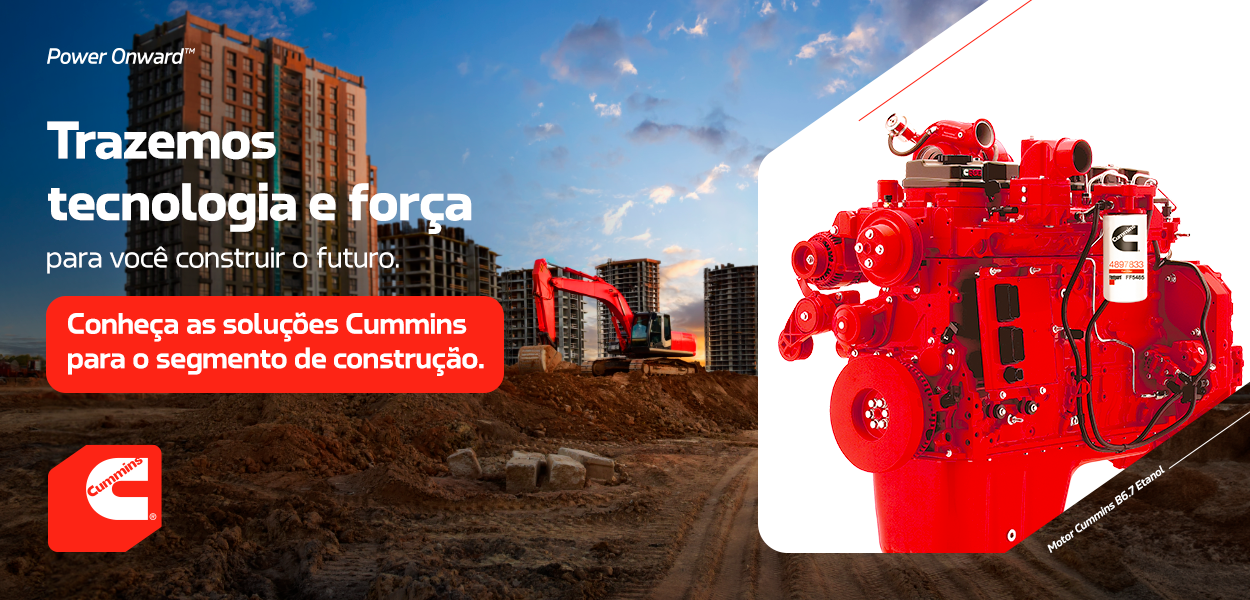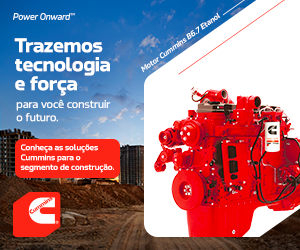Manufacturers present technologies for the sector
 Equipment available in Brazil provides features such as remote controls, frequency inverters, load cells, air-conditioned cabs, sensors, etc.
Equipment available in Brazil provides features such as remote controls, frequency inverters, load cells, air-conditioned cabs, sensors, etc.
Based on the advanced level of knowledge of the technical specifications presented in the article on page 12, manufacturers of gantries and overhead bridge cranes make their technologies available to the markets of Brazil and the world.
Ventowag - a company founded in Brazil’s state of Espirito Santo, for example, offers equipment that features remote control, frequency inverters, soft-start, load cells, anemometer-type sensors to alert the operator as to the wind speed, operation brakes, air-conditioned cabin and even a system for positioning and locating cargoes via GPS. “The structures of Ventowag gantries and overhead cranes are manufactured from ASTM A-36 specification steel plates, in the form of ‘ I ’-beams or closed box girders, with the latter of the two reinforced internally with diaphragm plates and angle bars (angle corners)”, explains Glauber Cordeiro of Ventowag.
As regards the structural component, the company’s specialist points out that the plates are cold cut, leveled and aligned, utilizing topography and precise templates, to then be welded electrically by a system of welding robots that addresses the welding of both sides of the structure simultaneously. “This avoids tensions and warping during the welding process”, he says. “Now the drive assembly, reducer and wheels are specially designed to eliminate points of breakage due to the clutch system that engages the shaft of the reducer directly to the wheel, without the use of exposed gears”, he adds, further pointing out that the cast iron wheels are heat treated (tempered) and have a minimum surface hardness of 320 Brinnel (320 HB).
Another company, CSM Engenharia de Movimentação (material handling engineering), is a division of CSM that is responsible for an area of manufacturing that includes swing jib cranes, tow trucks, monorails, gantries and overhead bridge cranes, in addition to steel cable (‘wire rope’) power hoists and ‘transtainers’ (equipment for moving shipping containers). “As regards gantries and overhead bridge cranes, however, we underscore the system for synchronization of two gantries or overhead cranes, which enables handling and moving of larger parts”, says Alexsandro Possani, Marketing Manager at the manufacturer.
 According to Possani, the equipment also comes with frequency inverters (utilized in all the movements of translation, direction and elevation) which enable a wide range of variation in speed. “As for safety, the machines set an overweight limit which does not allow users to move loads in excess of the maximum capacity of the equipment, in addition to an anemometer and, as an option, a presence sensor to avoid damage to the equipment and accidents”, describes the manager.
According to Possani, the equipment also comes with frequency inverters (utilized in all the movements of translation, direction and elevation) which enable a wide range of variation in speed. “As for safety, the machines set an overweight limit which does not allow users to move loads in excess of the maximum capacity of the equipment, in addition to an anemometer and, as an option, a presence sensor to avoid damage to the equipment and accidents”, describes the manager.
Among the technologies for their gantries and overhead bridge cranes, CSM also includes components such as electrical motors and reducers made by internationally acknowledged manufacturers. “What distinguishes us is our development of applications for major infrastructure works, such as the construction of the Line 4-South for the Metro in Rio de Janeiro, the construction of the São Paulo Metro’s Yellow Line, the works on the shipyard for the construction of Franco-Brazilian submarines, and works for the São Paulo monorail, among other large projects”, underscores Possani.
Another company, Demag - which was recently acquired by the Terex Group - divided its line of products based on two basic concepts due to the diversity of applications and of environments where gantries and overhead bridge cranes can be integrated. “The first concept is that of standardized general-purpose bridge cranes, which include under-hung bridge cranes and top-running cranes with a single or double girders”, underscores Ronaldo Fioratti Coffone, Demag Corporate Sales Manager. “In this group we also include gantries and semi-gantries (which have just one gantry leg)”, he adds, pointing out that such equipment comes with ‘wire rope’ (steel cable) hoists as load securing elements, while smaller bridges may use chain hoists which are, in comparison, more compact and less expensive.
The second group of Demag equipment is defined as ‘process-related’ bridge cranes. Coffone explains that these are machines whose operating quality does not limit them to material handling applications. “They are an integral part of the production process, as in the case of an area of presses, paper mills or steel mills, and can be equipped with buckets for bulk material and swivel hooks, besides of course conventional hooks for suspending of loads”, he says, pointing out that the lifting devices are usually open-winch type hoists which provide greater freedom of design as regards the classes of service to be performed, higher speeds and varying routes of travel during load elevation.
Inverters

Engineer Jean Muriel Hoffmann, of CSM, adds that the frequency inverter performs two main functions. “The first is operational since it commands the electrical power delivered to the motors, in their respective movements, and controls the variation of speed”, he says. The second function he mentions refers to protection of the equipment and safety since frequency inverters enable the programming of overweight limits so as to avoid the movement of loads in excess of the equipment’s maximum load capacity. “In addition, it is with the frequency inverter that we adjust the acceleration ramp to avoid load swing, which increases the service life of the mechanisms”, he adds.
Frequency inverters, according to Hoffmann, furthermore, are responsible for controlling and monitoring of the opening and closing of the brakes, providing protection and enabling the identification of failures caused by their activation. He warns, however, that to fully exploit these qualities, the maintenance manager must take certain precautions regarding the component, the first of which is ‘right-sizing’ for each lifting movement, transverse movement or translation. “Programming for the inverter must also be specified in the design of the equipment to duly meet demand requirements”, he says.
Paint job

As Fábio Araújo of CSM points out, care should be taken with the paint job of the equipment’s structure especially when it is installed at locations along the coast, where salty sea air - a powerful electrolyte - is a promoter of electrochemical corrosion. “A few studies suggest that better treatment of structural surfaces increases the time between stops for maintenance at least 2.5 fold in highly aggressive environments”, he says. “That’s why, we understand that we must determine and establish the degree of surface cleansing, the paints and the thickness of paint coats according to the equipment’s operating environment.”
For coastal and marine environments, for example, CSM applies a three-level system of painting: first the application of an undercoat of zinc ethyl silicate, then a second coat of an epoxy primer and the finishing coat of polyurethane enamel “This constitutes a minimum dry-film thickness of 240 µm”, says Araújo.
Ventowag also offers special paint jobs on structural elements of its gantries and overhead bridge cranes, according to Cordeiro. “We have developed procedures which take into account the type of environment, the relative humidity, temperature, incidence of ultraviolet radiation and salt-laden air, which results in an antioxidant treatment that includes blasting of surfaces with steel grit, painting with an epoxy-based paint and finishing in polyurethane, with options of coating thicknesses for normal indoor environments to extremely aggressive and outdoor environments”, the specialist concludes.

Av. Francisco Matarazzo, 404 Cj. 701/703 Água Branca - CEP 05001-000 São Paulo/SP
Telefone (11) 3662-4159
© Sobratema. A reprodução do conteúdo total ou parcial é autorizada, desde que citada a fonte. Política de privacidade














